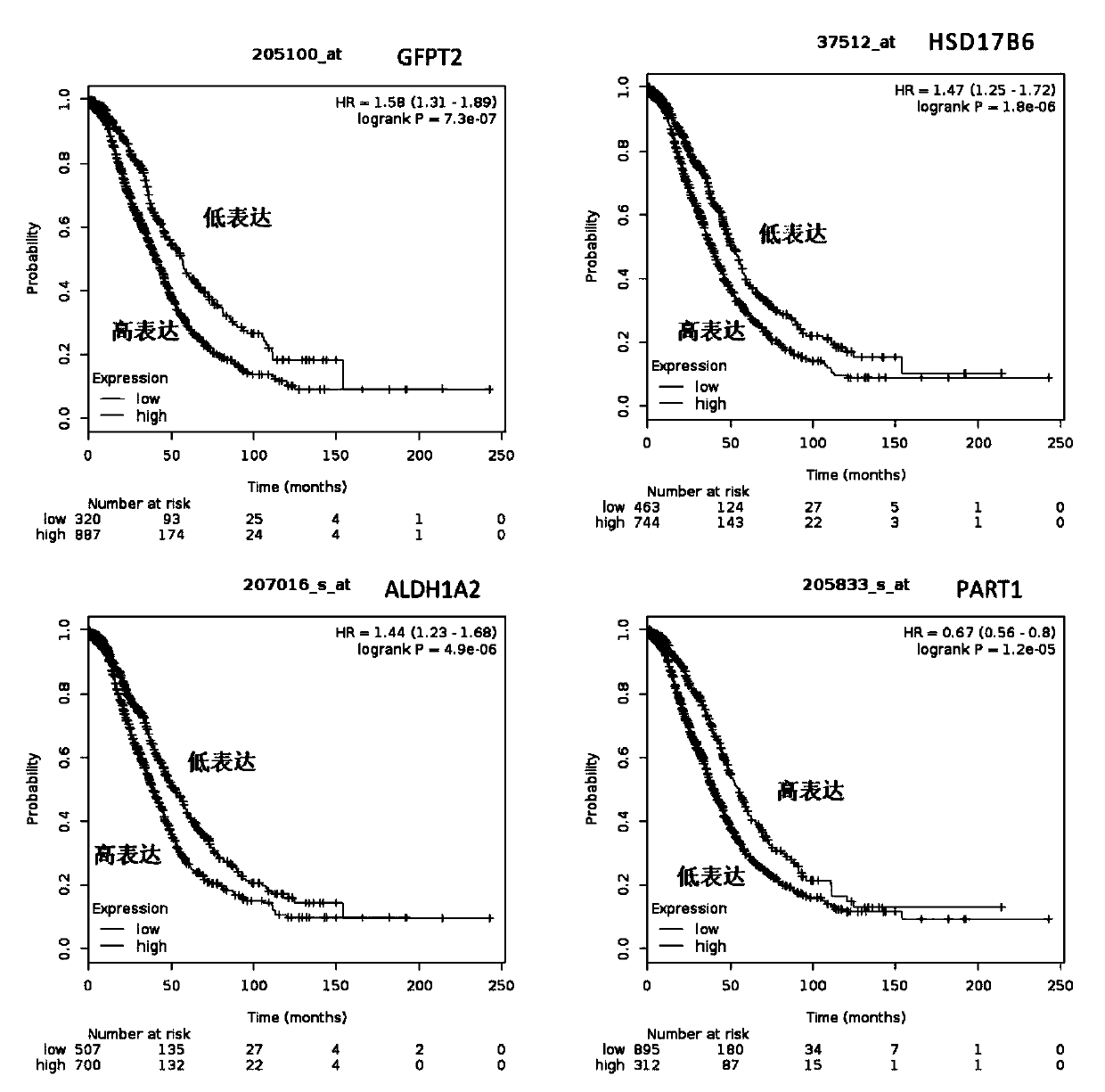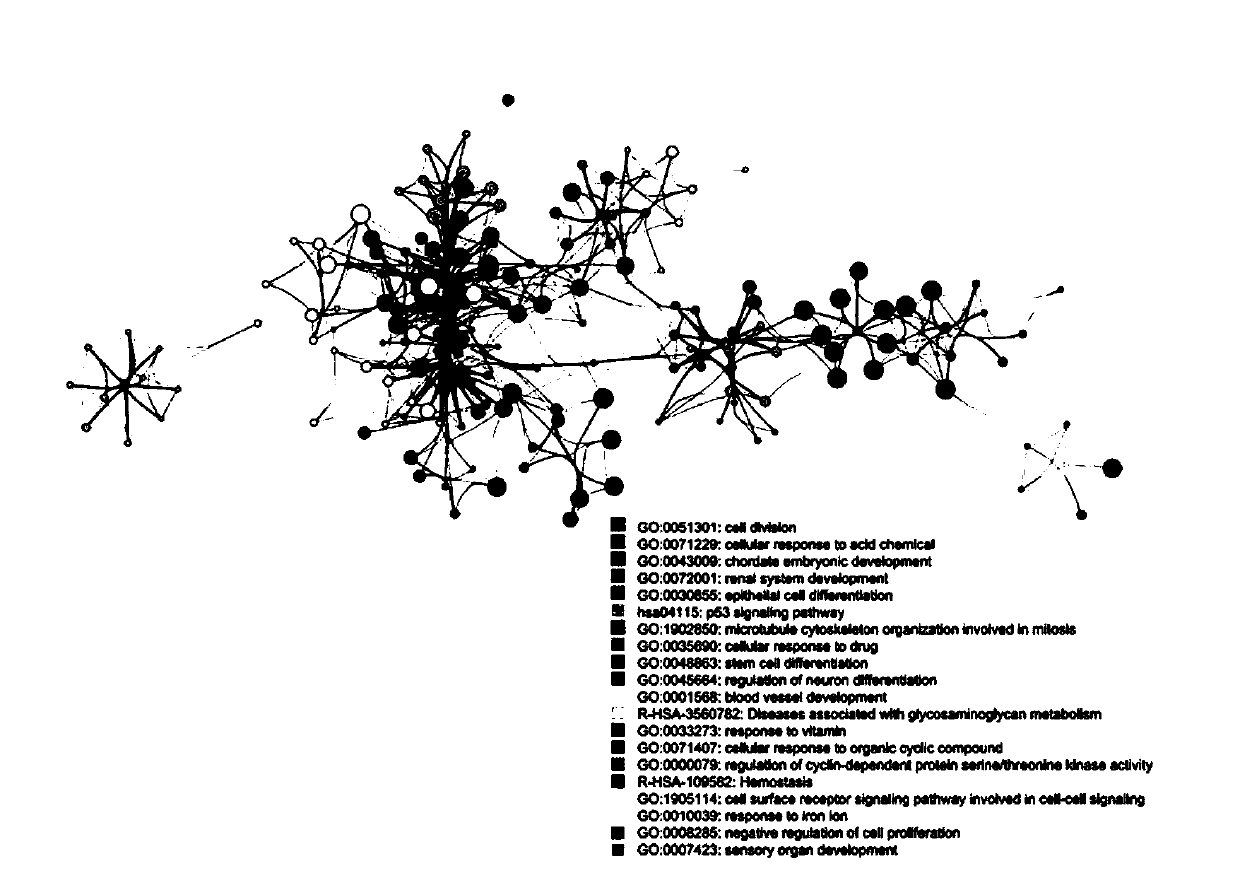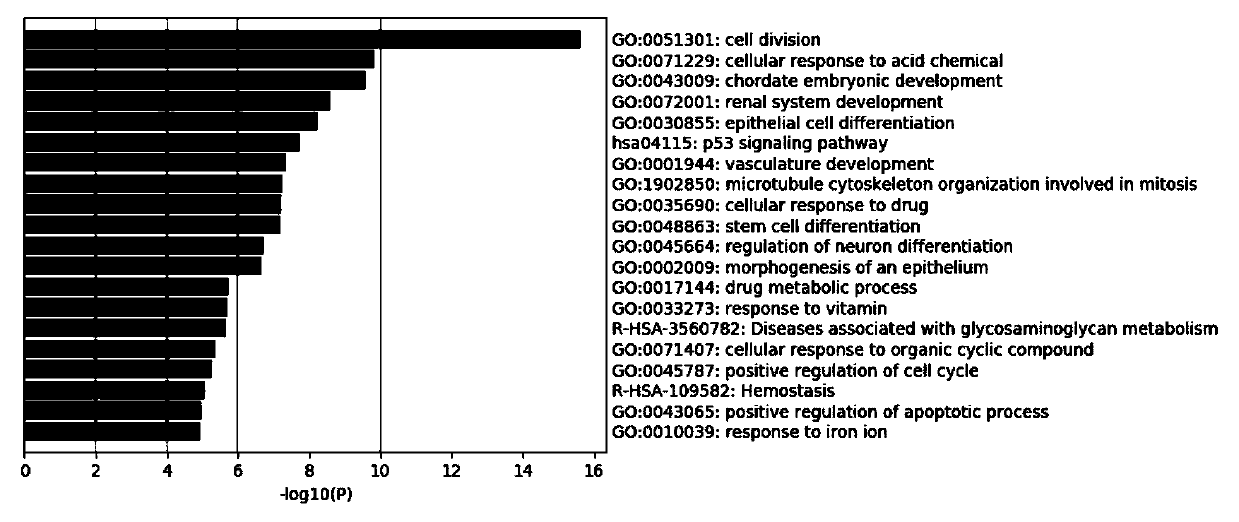Application of group of genes related to ovarian cancer prognosis
A technology of ovarian cancer and genes, applied in the direction of recombinant DNA technology, microbial measurement/testing, DNA/RNA fragments, etc., can solve problems that plague patients and doctors, and achieve the effect of avoiding excessive medical treatment
- Summary
- Abstract
- Description
- Claims
- Application Information
AI Technical Summary
Problems solved by technology
Method used
Image
Examples
Embodiment 1
[0052] There have been studies in the prior art literature using expression differences to show the correlation between genes or polygenomes and the prognosis of ovarian cancer. We compared the 11 gene scoring system with the existing single gene or genome system. We first performed univariate Cox regression analysis and showed that the 232 single genes from GSE described above had only weak overall survival for ovarian cancer. Associated. Then we used the previously reported 5-gene ovarian cancer prognostic signature (Liu LW et al., A Five-Gene Expression Signature Predicts Clinical Outcome of Ovarian Serous Cystadenocarcinoma. Biomed Res Int. 2016: 6945304.) to calculate the prediction score. We used the multivariate Cox regression analysis method to analyze its 5 genes in the previous 100 training sets, and calculated the corresponding coefficients of each gene with the same method and averaged them, and calculated the TCGA 307 ovarian cancer patients with the same formula ...
Embodiment 2
[0054] Predict the prognostic effect of patients with clinical serous ovarian cancer:
[0055] Collect the tumor tissues of ovarian cancer patients received clinically and extract RNA. The tumor tissues can include fresh biopsy tissues, postoperative tissues, fixed tissues and paraffin-embedded tissues. Then use the kit developed by the present invention and the corresponding instrument to quantitatively detect the expression levels of 11 genes in the prognosis scoring system. Input the expression level of 11 genes into the prognostic scoring formula established in the present invention:
[0056]
[0057] After calculating the patient’s predicted score, the doctor predicts the patient’s prognosis based on the score, such as the 5-year survival rate. At present, we have established the model through retrospective research and successfully verified it in different databases (Table 3). By calculating the prognostic scores of all patients in the database, the patients are ranked acco...
Embodiment 3
[0059] Predict the response of clinical ovarian cancer patients to targeted therapy such as PARP inhibitors (such as but not limited to olaparib, rucaparib and niraparib);
[0060] As a prognostic and predictive biomarker, BRCA1 / BRCA2 mutations are a larger risk factor for ovarian cancer (lifetime risk 40%). The response rate of olaparib in people without germ cell BRCA mutations is 30%. 50% of platinum-based drug-sensitive populations. In order to reduce ineffective or excessive use of targeted drugs and reduce medical costs, the present invention predicts that patients with clinical ovarian cancer will be exposed to PARP inhibitors (such as but not limited to olaparib) through the following implementations. ), the reaction of rucaparib and niraparib); tumor tissues were collected from clinically accepted ovarian cancer patients and RNA was extracted. The tumor tissues can include fresh biopsy tissue, postoperative tissue, and fixed Tissue and paraffin-embedded tissue. Then use...
PUM
 Login to View More
Login to View More Abstract
Description
Claims
Application Information
 Login to View More
Login to View More - R&D
- Intellectual Property
- Life Sciences
- Materials
- Tech Scout
- Unparalleled Data Quality
- Higher Quality Content
- 60% Fewer Hallucinations
Browse by: Latest US Patents, China's latest patents, Technical Efficacy Thesaurus, Application Domain, Technology Topic, Popular Technical Reports.
© 2025 PatSnap. All rights reserved.Legal|Privacy policy|Modern Slavery Act Transparency Statement|Sitemap|About US| Contact US: help@patsnap.com



